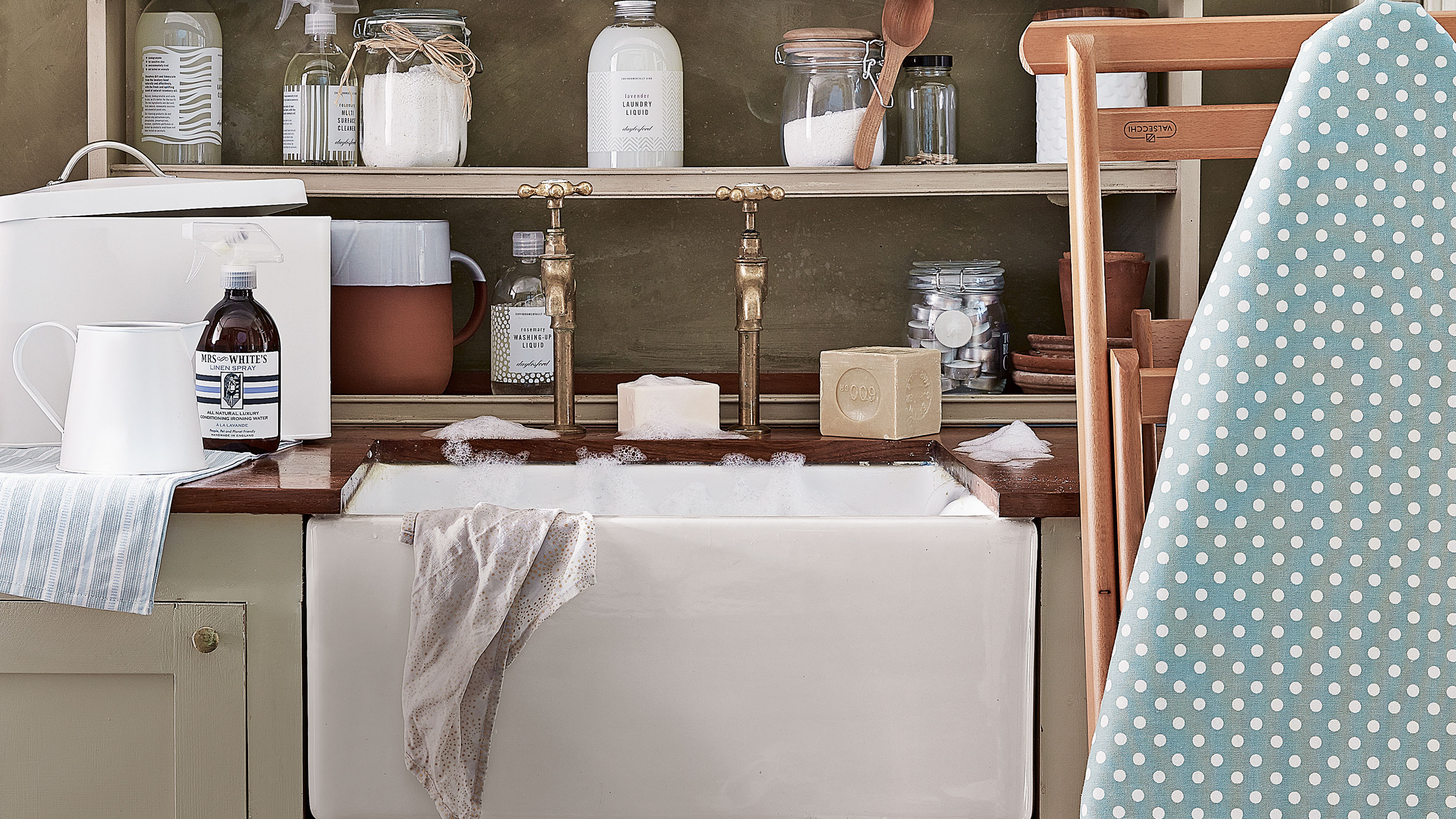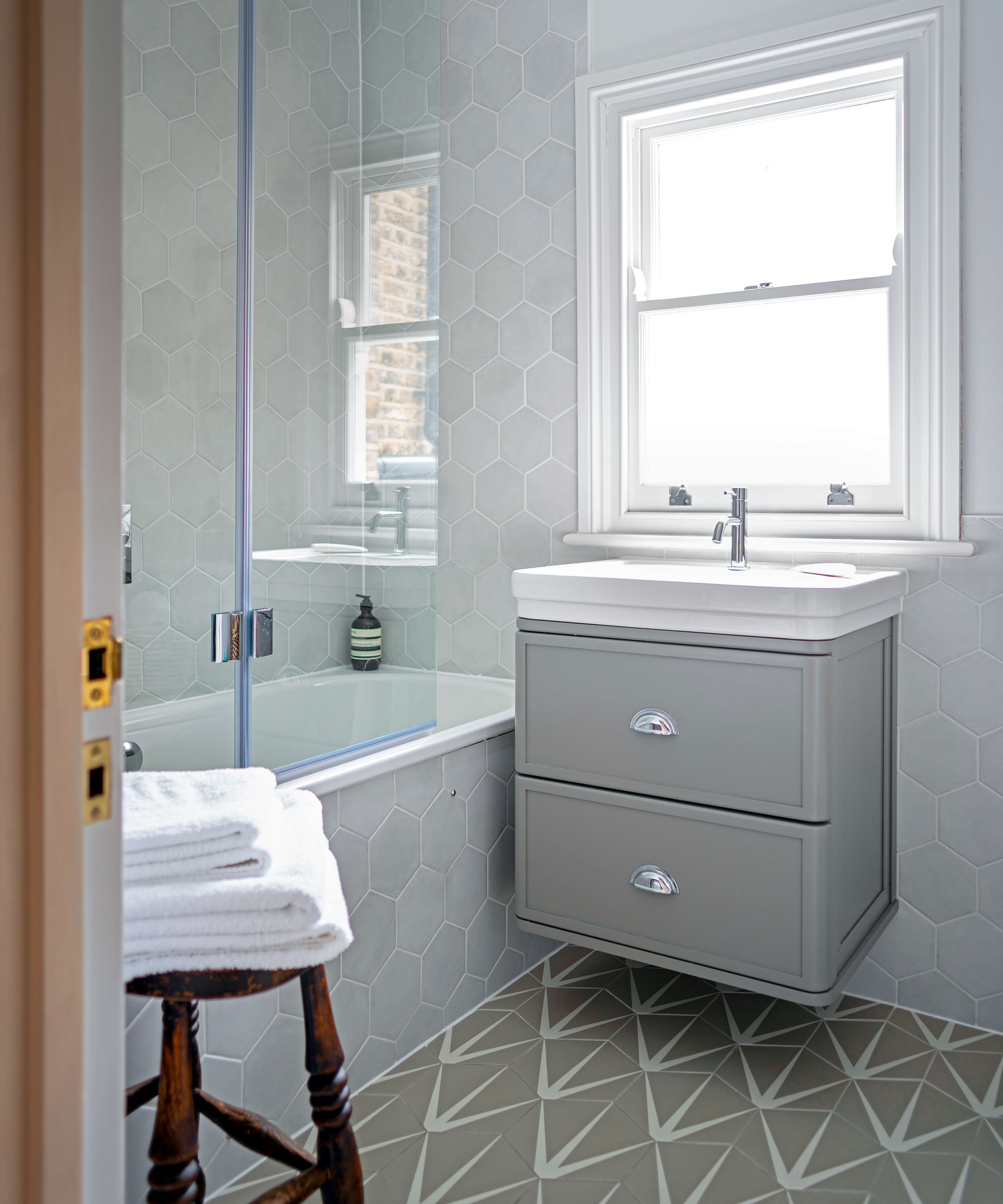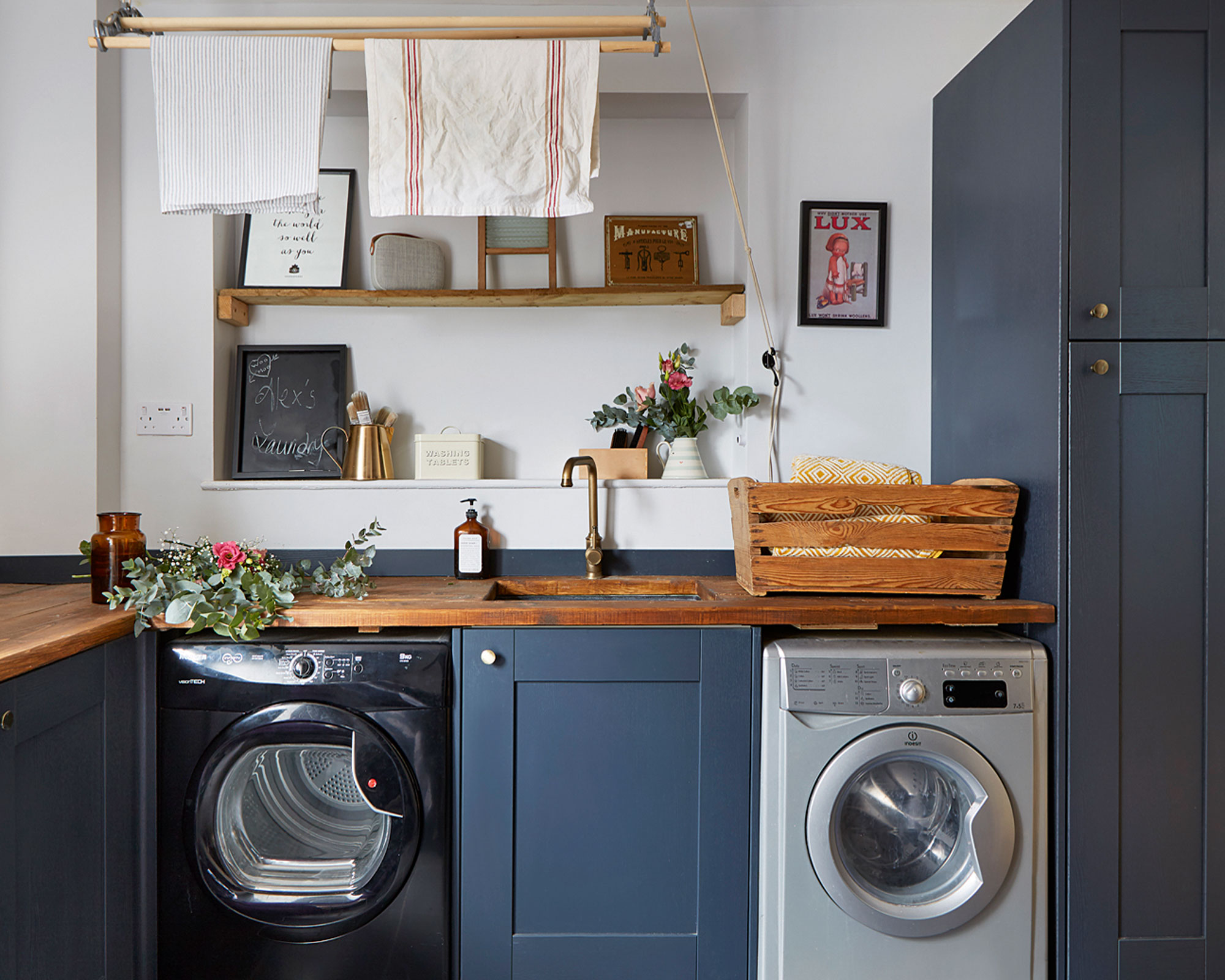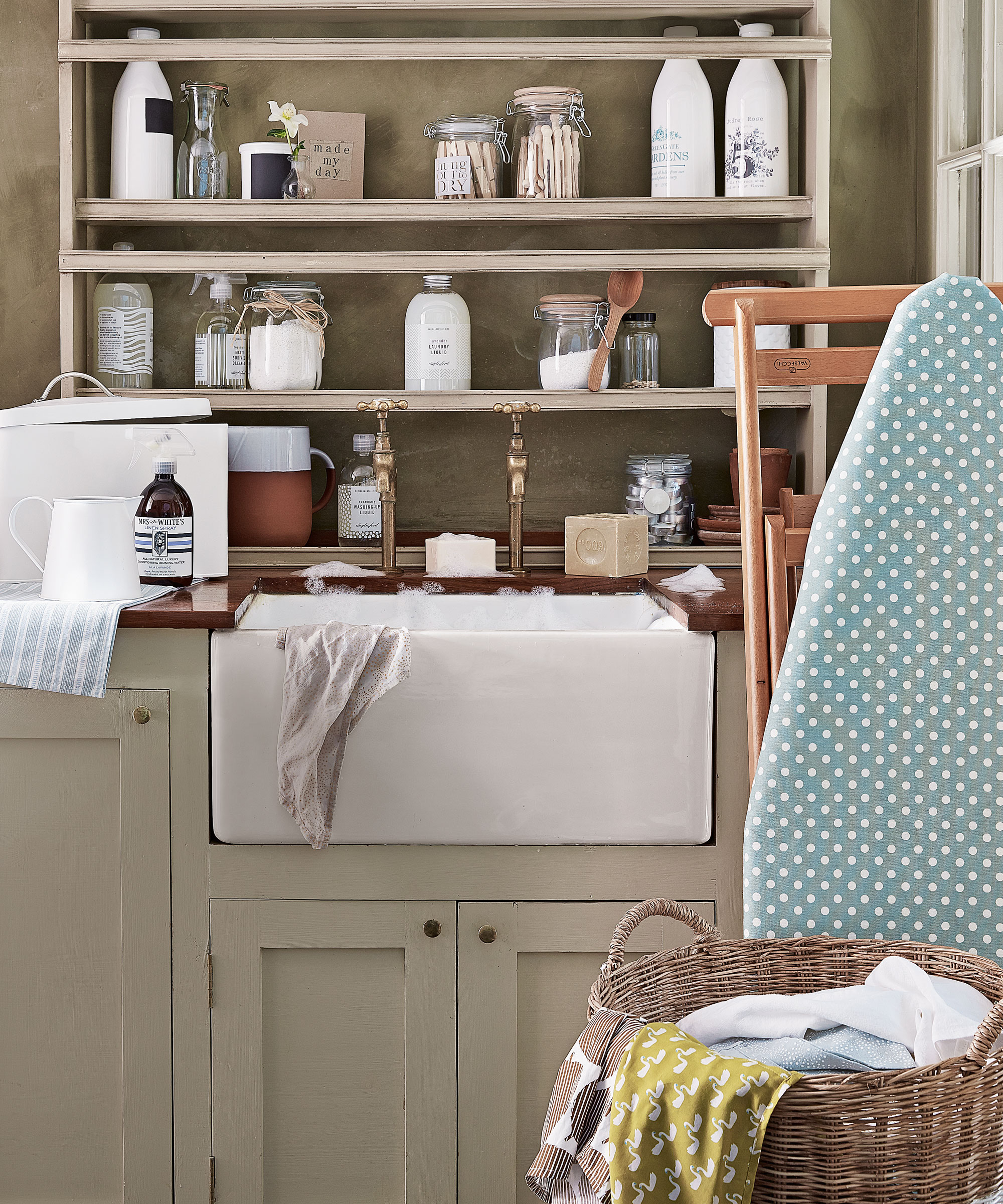How to strip laundry – and mistakes to avoid
Knowing how to strip laundry will get dingy towels and bed linen shiny and bright – save time with these tips


Laundry stripping is nothing new, but TikToks of towels floating in alarmingly murky bathwater have left us wondering how to strip laundry – and whether we should be trying it at home. Similar to that bathtub rug cleaning hack everyone was trying a couple of years ago, strip washing removes a ton of hidden dirt and grime.
While for many of us, the idea of adding another step to our laundry routine is simply not an option, there are many cleaning fans keen to try it. So whether you're washing towels or bedsheets, stripping them occasionally will banish residue from detergent, minerals in your water, fabric softener and oils that builds up over time.
Below, we share tips and mistakes to avoid so you can get your linens as germ-free and clean as the day you bought them.

Shopping list
How to strip laundry
1. Fill the bathtub with hot water, pour in two parts powdered detergent, one part Borax and one part washing soda.
2. Put the clean towels, linens or blankets into the water, and stir with the end of a mop. Leave to soak for four to five hours.
3. Wring out the linens and wash in the washing machine without any detergent, and with an extra rinse cycle.
So, why should you bother? As well as getting rid of detergent build up, laundry stripping is said to make towels softer and more absorbent, and remove odors. So if you're struggling to get rid of a musty smell on a vintage piece of clothing (or that gym smell from workout gear), this might work for you.
Other cleaning enthusiasts say you shouldn't strip washing workout gear, or any colored fabrics for that matter, because the exposure to high temperatures over several hours can cause dyes to bleed, so it's up to you whether you want to take the risk. Similarly, washing towels in hot water gets them bacteria-free, but experts warn against going above 140℉ to avoid color bleeding.

Laundry stripping isn't something you want to do regularly, but as part of an annual deep clean. Otherwise, it won't be good for the longevity of your clothes. It's best done on white laundry, old towels and perhaps bedding.
It's also worth considering why you need to strip wash. Crisp white bedsheets that have developed a gray tinge might simply have a buildup of fabric softener, which Borax will help to eliminate. It could also be that you're using a bit too much detergent.
You could also try a different detergent to see if that helps, leave out the fabric conditioner entirely, and strip wash occasionally. Minerals from your water can also impact how clean your laundry feels, for example, if you live in a hard water area more minerals may be left behind on clothing.

If you've got little kids, leaving a bathtub full of hot water and chemicals for four or five hours might not be practical. And if you don't want to carry heavy, damp towels through the house to the washing machine, you could try strip washing in a top-loading washing machine rather than the bath.
It takes time and effort, but strip washing is certainly a satisfying way to deep clean laundry. The pandemic has left us much more aware of germs, and this cleaning method reassures us there's no grime lurking on our towels or bed linens.
Can you use Oxiclean to strip laundry?
'I usually use Oxiclean (I buy this pack from Amazon) to strip my laundry without Borax and washing soda,' says Lucy Searle, Editor in Chief of Homes & Gardens. 'I don't use it on colored fabrics but I do use it on towels and sheets, piling everything into the large deep sink I have in my laundry room. I leave it to soak for the day while I'm at work then wash it in the evening and allow it to dry overnight.'
What laundry should you not strip?
'When it comes to laundry care, many people opt for the most aggressive options possible,' comments Beatrice Flores, a cleaning expert from Living Pristine. 'Stripping laundry can be a great way to remove residue and freshen fabrics, but there are definitely situations in which it should not be done.
'First, items that contain natural fibers like wool should not be stripped. As with any type of laundering, use cold water when washing these items and avoid harsh detergents or bleaches as they can cause shrinkage and fading,' she explains. 'Additionally, more delicate fabrics such as silk or rayon should also not be stripped because high temperatures and strong chemicals can cause irreversible damage.'
How do you strip laundry naturally?
'The first step in stripping your clothes naturally is by using hot water or boiling water,' says Beatrice. 'Boiling the garments will help loosen dirt, sweat, grime, and other particles from fabrics. You can also add some white vinegar or baking soda into the mix for added cleaning power. Baking soda is especially great at counteracting smelly odors caused by sweat and bacteria buildup. The next step is to rinse your garments with cold water and then hang them out to dry.'
Sign up to the Homes & Gardens newsletter
Design expertise in your inbox – from inspiring decorating ideas and beautiful celebrity homes to practical gardening advice and shopping round-ups.

Millie Hurst is a freelance lifestyle writer with over six years of experience in digital journalism. Having previously worked as Solved Section Editor at Homes & Gardens and Senior SEO Editor at News UK in London and New York, Millie has written for an array of homes brands including Livingetc and Real Homes and was formerly Senior Content Editor at Ideal Home. She has written and edited countless features on home organization, decluttering and interior design and always hopes to inspire readers with new ways to enjoy their homes. She loves to weave nature-inspired decor and nods to time spent in Italy into her own home.
-
 Kris Jenner's favorite air fryer, the Ninja Crispi, is the perfect small kitchen solution – it deserves a place on the most compact of countertops
Kris Jenner's favorite air fryer, the Ninja Crispi, is the perfect small kitchen solution – it deserves a place on the most compact of countertopsKris approves of this compact yet powerful air fryer, and so do our own kitchen appliance experts, praising it for its multifunctionality
By Hannah Ziegler Published
-
 Ina Garten's storage pantry is an insightful window into all of the best cookware used by the chef – and it's easy to recreate on your kitchen shelves from $48
Ina Garten's storage pantry is an insightful window into all of the best cookware used by the chef – and it's easy to recreate on your kitchen shelves from $48The beautiful dishware in The Barefoot Contessa's Hamptons pantry showcases the tools she uses most often to cook – this is exactly how you replicate it
By Sophie Edwards Published